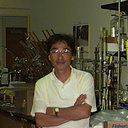Growth inhibitory, bactericidal, and morphostructural effects of dehydrocostus lactone from Magnolia sieboldii Leaves on antibiotic-susceptible and -resistant strains of Helicobacter pylori.
Keywords
Coimriú
Helicobacter pylori is associated with various diseases of the upper gastrointestinal tract, such as gastric inflammation and duodenal and gastric ulcers. The aim of the study was to assess anti-H. pylori effects of the sesquiterpene lactone dehydrocostus lactone (DCL) from Magnolia sieboldii leaves, compared to commercial pure DCL, two previously known sesquiterpene lactones (costunolide and parthenolide), (-)-epigallocatechin gallate, and four antibiotics. The antibacterial activity of natural DCL toward antibiotic-susceptible H. pylori ATCC 700392 and H. pylori ATCC 700824 strains (MIC, 4.9 and 4.4 mg/L) was similar to that of commercial DCL and was more effective than costunolide, parthenolide, and EGCG. The activity of DCL was slightly lower than that of metronidazole (MIC, 1.10 and 1.07 mg/L). The antibacterial activity of DCL was virtually identical toward susceptible and resistant strains, even though resistance to amoxicillin (MIC, 11.1 mg/L for PED 503G strain), clarithromycin (49.8 mg/L for PED 3582GA strain), metronidazole (21.6 mg/L for H. pylori ATCC 43504 strain; 71.1 mg/L for 221 strain), or tetracycline (14.2 mg/L for B strain) was observed. This finding indicates that DCL and the antibiotics do not share a common mode of action. The bactericidal activity of DCL toward H. pylori ATCC 43504 was not affected by pH values examined (4.0-7.0). DCL caused considerable conversion to coccoid form (94 versus 49% at 8 and 4 mg/L of DCL for 48 h). The Western blot analysis revealed that urease subunits (UreA and UreB) of H. pylori ATCC 43504 were not affected by 10 mM of DCL, whereas UreA monomer band completely disappeared at 0.1 mM of (-)-epigallocatechin gallate. Global efforts to reduce the level of antibiotics justify further studies on M. sieboldii leaf-derived materials containing DCL as potential antibacterial products or a lead molecule for the prevention or eradication of drug-resistant H. pylori.


